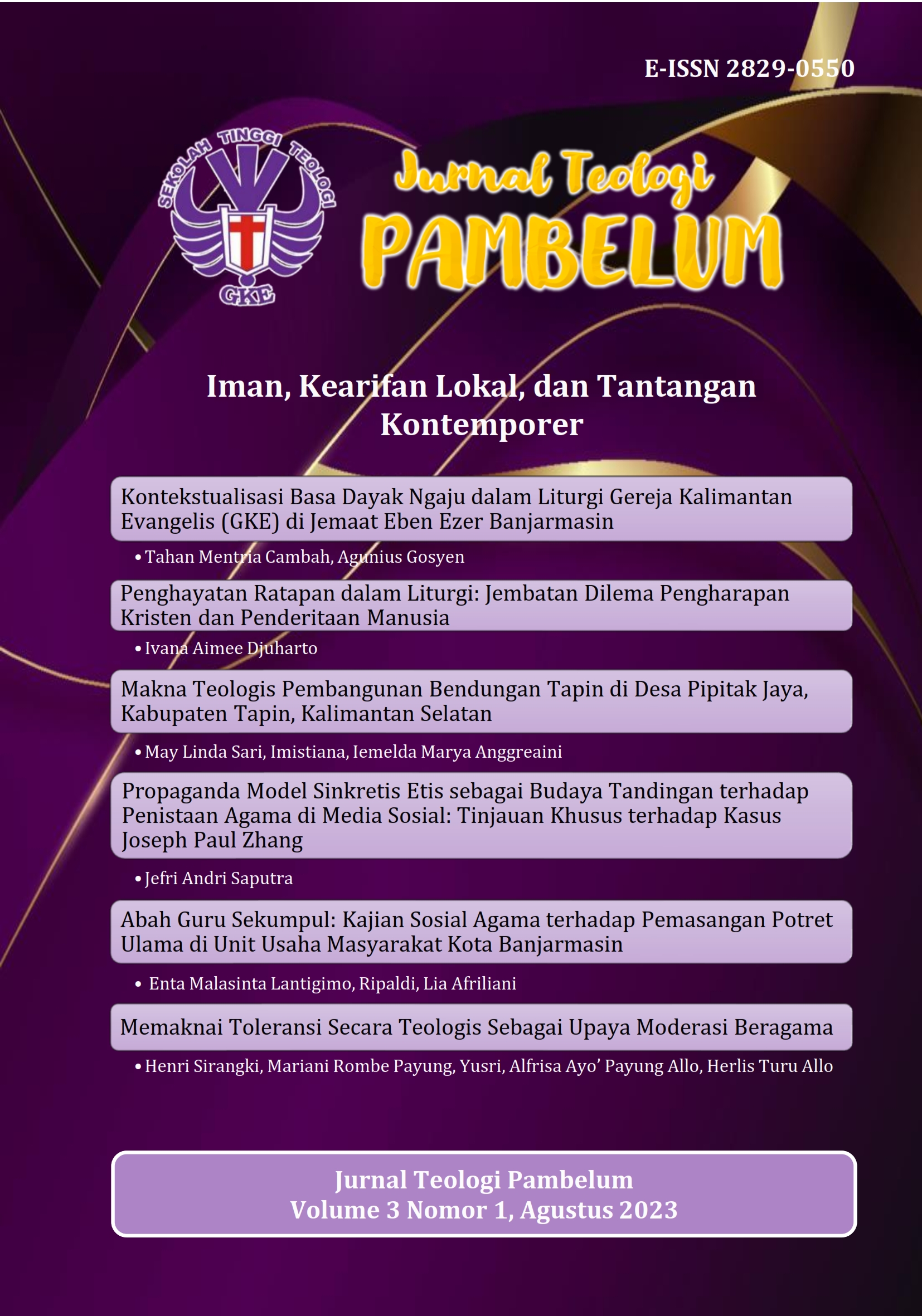Penghayatan Ratapan dalam Liturgi: Jembatan Dilema Pengharapan Kristen dan Penderitaan Manusia
Jembatan Dilema Pengharapan Kristen dan Penderitaan Manusia
DOI:
https://doi.org/10.59002/jtp.v3i1.50Keywords:
ratapan, liturgi, pengharapan Kristen, penderitaan manusiaAbstract
Inside of human life’s reality, it is undeniable that Christians will definitely experience various kind of sufferings. This causes Christian to have a dilemma between the hope taught in Christian teachings and the reality of life that has a lot of suffering. This writing explains that lamentation in liturgy can bridge the dilemma. Here, I use library research method in to explain about the topic. Firstly, this writing delves how lamentation is a necessary part in human wholeness. Then, it provides biblical explanations from the Old Testament, the figure of Jesus, and the New Testament as the basis that human’s lament is reasonable and necessary. Moving on from here, I explain the importance of embracing lamentation in the liturgy and gives examples of inserting lamentations into the liturgy. Through this writing, it is found that lamentation is a natural thing that Christians should do; lamentation can bridge the dilemma of Christian hope and human’ sufferings, so it is necessary to apply lamentation in the liturgy.
References
Ahrens, A. M. (2017). Suffering, Soul Care, and Community: The Place of Corporate Lament in Evangelical Worship. The Southern Baptist Theological Seminary.
Brueggeman, W. (1984). The Message of The Psalms: A Theological Commentary. Ausburg Publishing House.
Dickie, J. F. (2019a). Lament as a Contributor to the Healing of Trauma: an Application of Poetry in the Form of Biblical Lament. Pastoral Psychology, 68(1).
Dickie, J. F. (2019b). The Importance of Lament in Pastoral Ministry: Biblical Basis and Some Applications. Verbum et Ecclesia, 40(1)(a2002). https://doi.org/%0A10.4102/ve.v40i1.2002
Hoekema, A. A. (1986). Created in God’s Image. William B. Eerdmans Publishing Company.
Lewis, C. S. (1950). The Lion, the Witch and the Wardrobe. Geoffrey Bles.
Parry, R. A. (2011). Wrestling with Lamentations in Christian Worship.
Pemberton, G. (2012). Hurting with God: Learning to Lament with The Psalms. Abilene Christian University Press.
Pembroke, N. (2010). Pastoral Care in Worship: Liturgy and Psychology in Dialogue. T&T Clark International.
Phases of Trauma Recovery. (n.d.). Manitoba Trauma Information & Education Centre. https://trauma-recovery.ca/recovery/phases-of-trauma-recovery/
Smith, J. K. A. (2021). Mendambakan Kerajaan: Ibadah, Wawasan Dunia, dan Pembentukan Budaya (J. Siswanto (Ed.)). Momentum Christian Literature.
Williams, F. (2008). A Form-Critical Classification of the Psalms According to Hermann Gunkel.
Willits, J. (2016). Following The “Man of Sorrows” - Jesus’s Path Toward Openheartedness: A Reflekction on Embodiment and The Practice of Lament. Bulletin of Ecclesial Theology, 3.1, 87–113.
Willitts, J. (n.d.). Book Review: Jesus Wept - The Significance of Jesus’ Laments in the NT by Rebekah Eklund. Journal of The Evangelical Theology Society.
Wright, C. J. H. (2008). The God I Don’t Understand. Zondervan.
Zed, M. (2004). Metode Penelitian Kepustakaan. Yayasan Obor Indonesia.
Downloads
Published
How to Cite
Issue
Section
License
Copyright (c) 2023 Ivana Aimee Djuharto

This work is licensed under a Creative Commons Attribution 4.0 International License.













